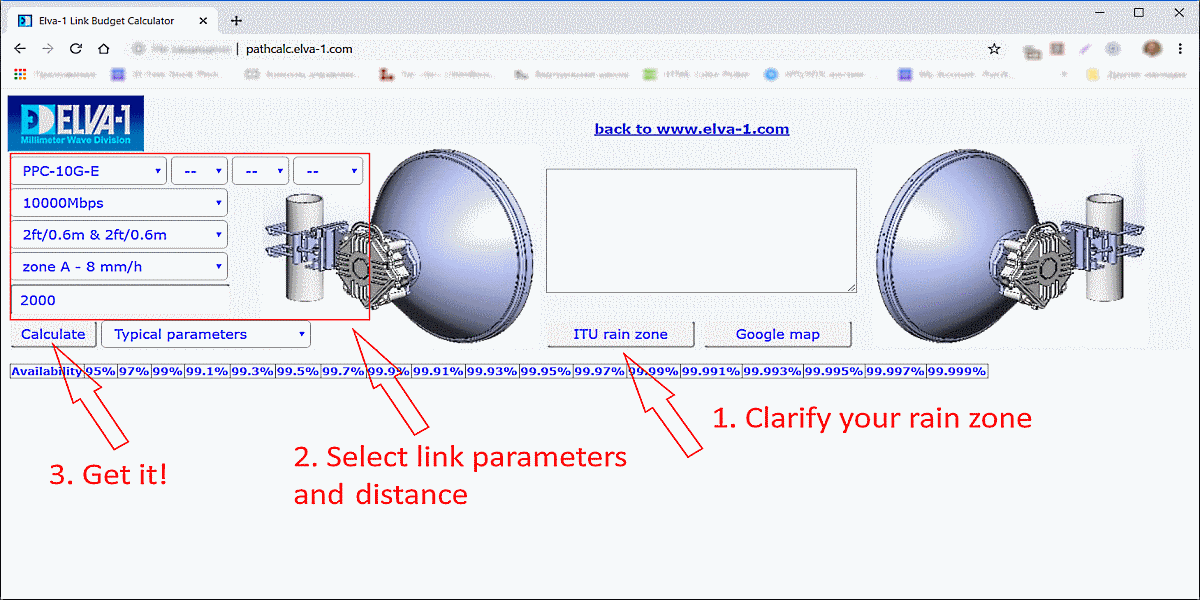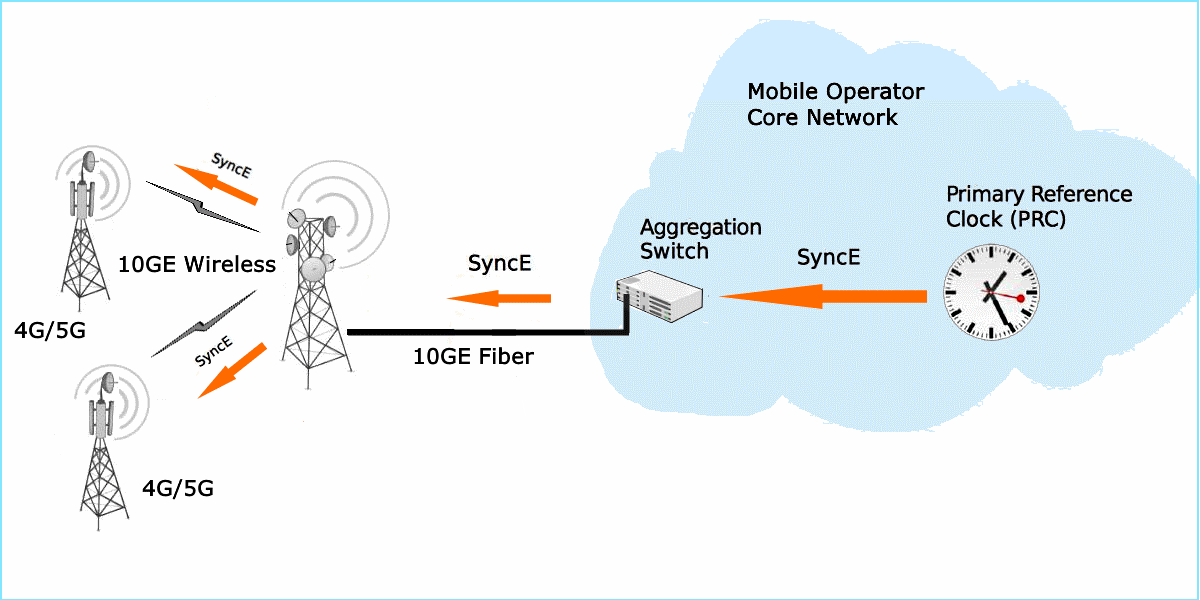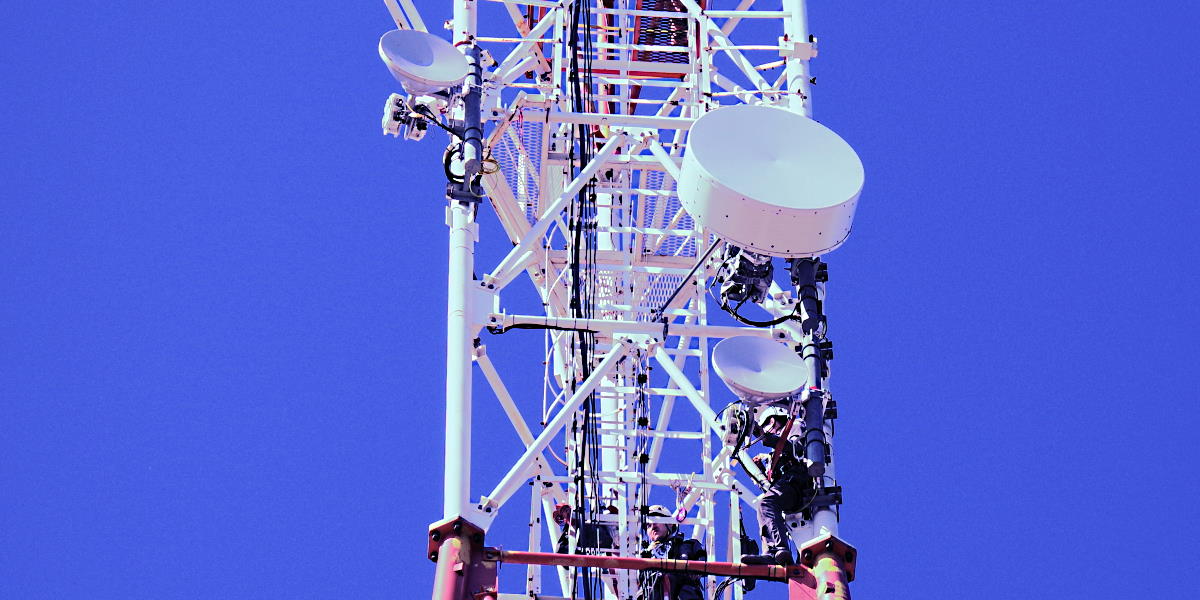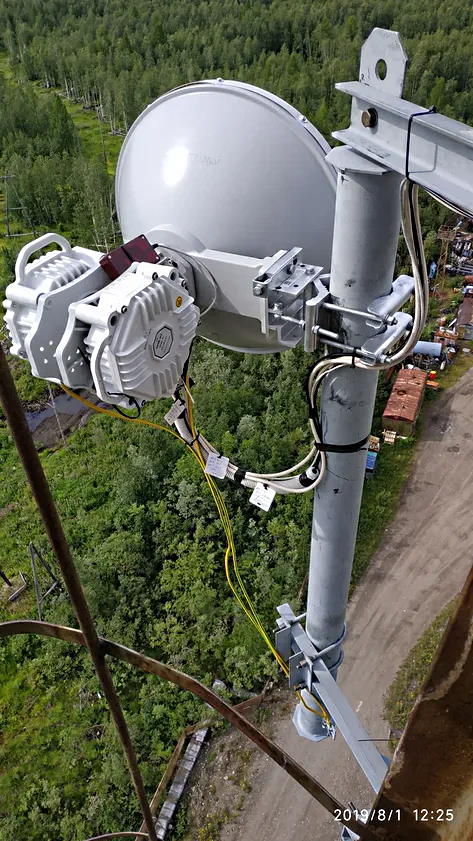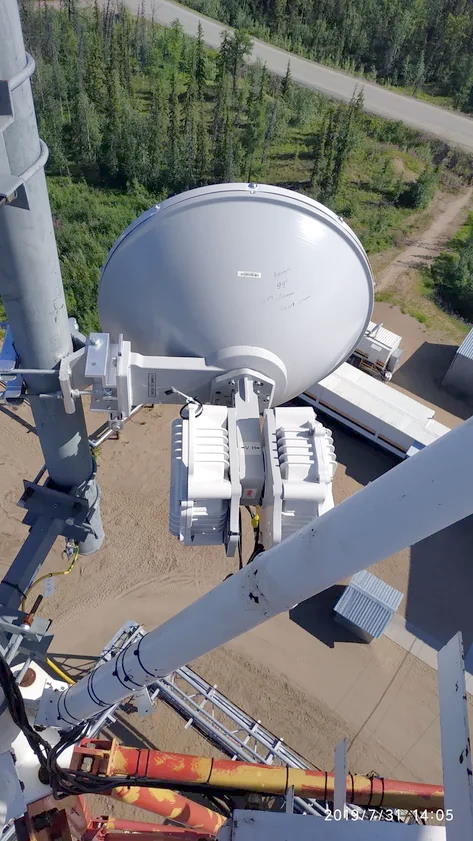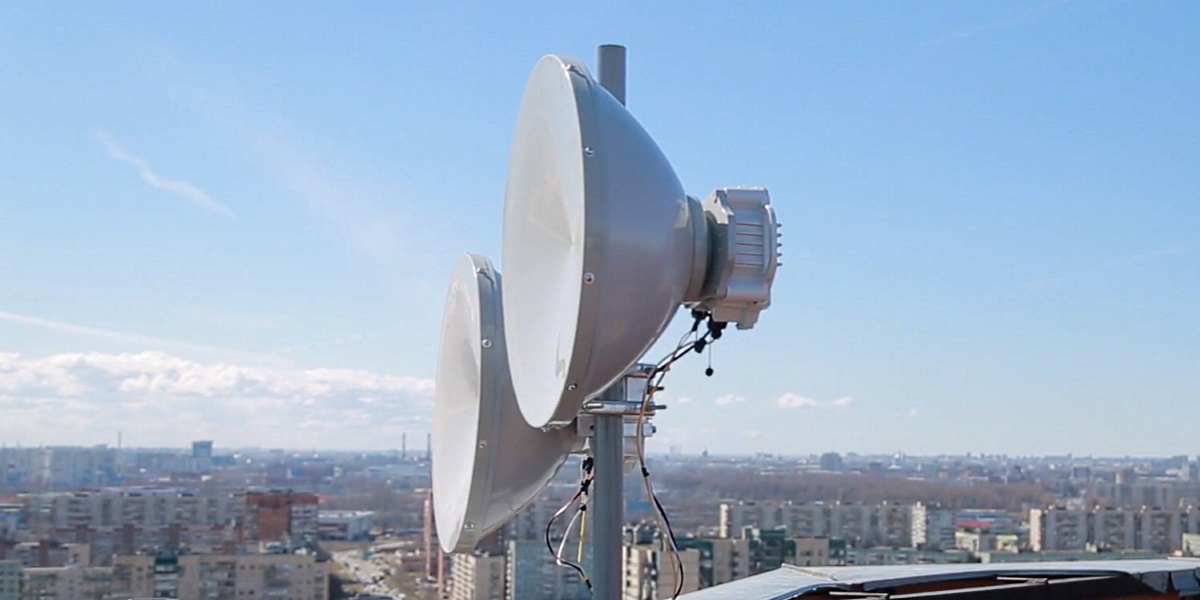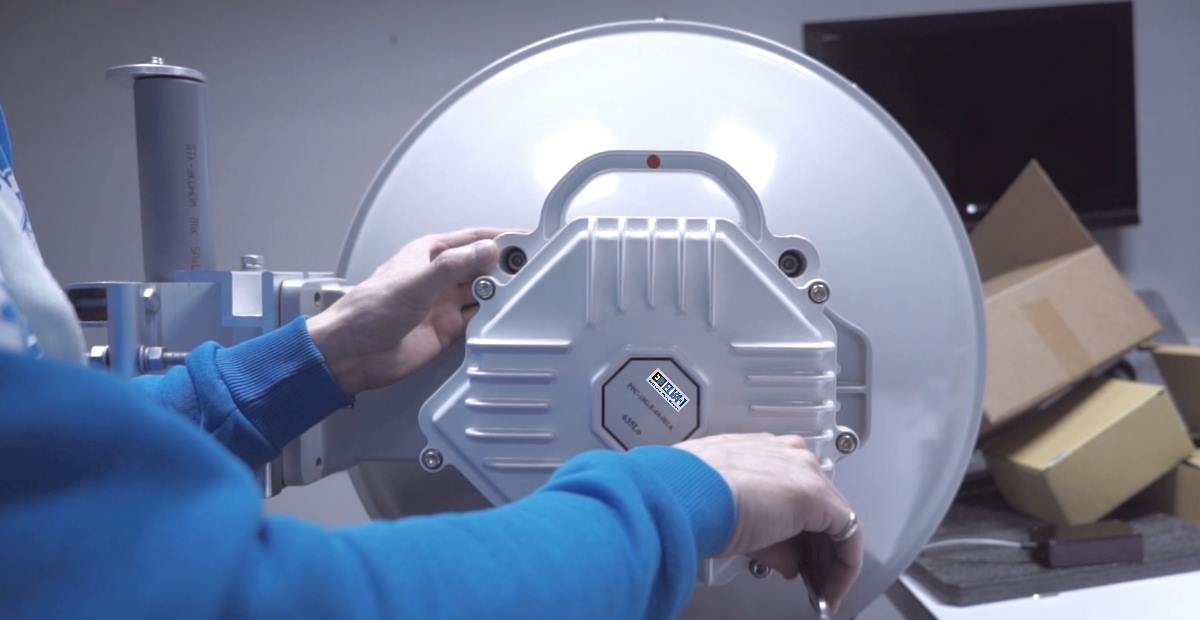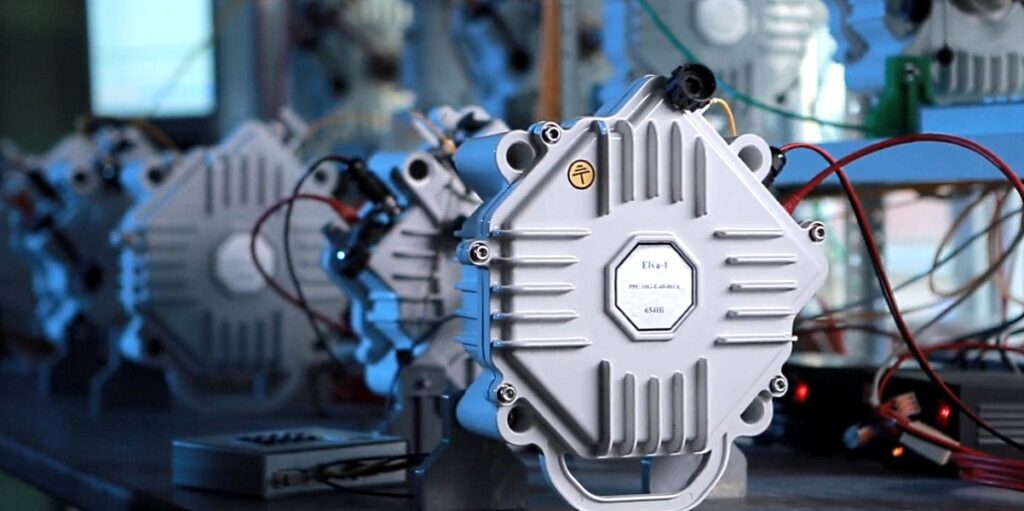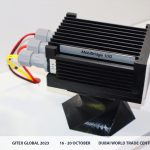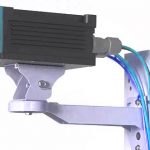All posts tagged: E-band link
User Manual for Link Budget Calculator
For Base Stations Synchronization — SyncE and PoE are in 10-gigabit PPC-10G radios
Synchronous Ethernet (SyncE) feature in millimeter wave links allows mobile operators to connect LTE and 5G base stations over the radio using this type of synchronization in their networks. Implementation of SyncE in ELVA-1 10-gigabit PPC-10G radios expands the possibilities for using PPC-10G to synchronize base stations within mobile network worldwide.
Synchronization is a key factor for the functioning of communication systems, and it is especially critical for LTE and 5G standards. The transmission of massive multimedia traffic, such as digitized voice and video, requires minimal transmission delays. In turn, for minimal data buffering in each node of the mobile communication network, it is necessary that these nodes are tightly synchronized with a reference master oscillator.
Today there are four of the most common base station synchronization options:
1. Via the GPS module as part of the base station.
2. From the operator’s core TDM network.
3. Using the IEEE 1588v2 packet network (implemented in the PPC-10G since 2017).
4. Using the SyncE packet network (implemented in the PPC-10G since Sept. 2019).
In recent years, mobile operators have relied on satellite-based synchronization of base stations as the most time-tested working solution. Moreover, for base stations operating via the radio channel “in countryside”, i.e. out of fiber connectivity to core TDM network, synchronization was almost always carried out through the GPS module. However, a significant increase in the total number of base stations connected via the radio channel, and location in places of poor GPS signal, required the use of alternative synchronization methods (like options #3 and #4).
Earlier, the synchronization functionality available in the PPC-10G radios by IEEE 1588v2 did not fully satisfy mobile operators. The fact is that according to the IEEE 1588v2 standard, the transmission of frequency and phase information is implemented at the software level. This means the quality of synchronization could be unstable and it depends on the real-time network load.
Synchronous Ethernet (SyncE) solves the problem of transmitting synchronization signals in a packet network at the physical level, and does so with high accuracy. A network based on PPC-10G with the SyncE feature can be used to distribute clock (frequency) synchronization signals for the operation of base stations. SyncE is currently available for PPC-10G-L2 radio with integrated 10GE 4-port L2+ switch.
SyncE is now available for PPC-10G-L2 radio with integrated 10GE 4-port L2+ switch.
Another important feature embedded in the PPC-10G equipment is the ability of PoE (Power over Ethernet). This technology allows to transfer electrical energy to radio equipment along with data through a standard twisted pair cable in Ethernet network. Usually it is for conditions where it is difficult to lay a separate electric cable (DC voltage) from the power supply to the radio.
40 Gbps Wireless World Record for E-band Communications at a Distance of 11 km in Polar Circle
First time in the industry, commercial 40 Gbps wireless channel was deployed at unprecedented distance of 11 km (~7 miles). The channel has 72 μs latency and is built on doubled PPC-10G-E/2+0 E-band radios for Norilsk Nickel (MCX: GMKN).
ELVA has reported on their website about deployment of 40 Gbps radio channel across the river floodplain as wireless backup of Norilsk Nickel’s 40GE fiber channel backhaul. The fiber has 40 Gbps bandwidth similar to installed radiolink and is intended for the operation of local mobile operators, and municipal services.
This project is a significant technological achievement and it marks the world record for combining ultra-gigabit overall bandwidth of the E-band radio communications with the unprecedented distance range.
In fact, 40 Gbps wireless channel is a new technology that has a proven potential for developing telecommunications infrastructure of large businesses.
A particularly difficult section of fiber backhaul is considered to be the pass of the cable at the bottom of the river. Extraordinary climate conditions of the Polar Circle make it impossible to repair the fiber cable under the iced waters for much of the year. In this regard, the customer has decided to build a backup wireless channel with a capacity of 40 Gbps over the floodplain of the river.
The points of deployment of 40 Gbps wireless channel were done at antenna masts, located on different banks of the river at a distance of 11 km. There were used two paired radio links of the PPC-10G-E-HP / 2+0 model. These are four parallel independent 10 Gbps radio channels aggregated into total capacity of 40 Gbps. Such scheme provides increased reliability of the wireless channel, as each 10 Gbps transceiver has an independent connection to power supply and external network equipment.
Max latency measured at 11 km distance was 72 microseconds. These numbers show that E-band radios can bring the data capacity and latency needs of 5G networks as well.
Customer’s Technical Director said, “We have studied the product of global brands of 10GE radio links looking for equipment which could work at wireless distance of 11 km. Only PPC-10G-E-HP radio has satisfied us. After few months of testing of one pilot 10 Gbps radio, we were assured that this radiolink is what we exactly need. At the present time, the radio channel with up to 40 Gbps capacity has been put into commercial operation”.
With this project, it was confirmed that 70/80 GHz E-band 10GE radio links could be successfully used for replacement or as a backup for any hi-end fiber backhaul. There are many territories in the world where the laying of fiber optic links is complicated and costs a lot of money. As an alternative to fiber or as a backup line, the 70/80 GHz PPC radios provide short deployment time at an affordable cost.
PPC-10G-E-HP / 2+0 operates in the frequency range 70/80 GHz and has two independent 10 Gigabit Ethernet channels. Two PPC-10G-E-HP / 2 + 0 radio bridges with various center frequency and cross-polarization of the signal allows to get 40 Gbps aggregate total bandwidth.
***
About ELVA-1
Founded in 1993, ELVA -1 has facilities in Estonia. Since 1993 the company has designed and manufactured millimetre wave equipment for communications and scientific sectors. For the past decade ELVA-1 has concentrated on designing high quality communications point-to-point radios, this has culminated in the release of the PPC-10G, the world’s longest range commercially available 10+ Gigabit radio. Company website for telecom products http://tele.elva-1.com.
10 Gbps Radios for Mass-Quantity Delivery for Mobile Operators
Bringing 10GE Internet connection to B2G clients is vey important. These are socially significant bodies as local hospitals, schools, social security services, and mostly in small cities and rural regions. Significant part of these connections will be 10GE wireless, while other ones by fiber.
Based on the results of the operator’s tender, PPC-10G-E radios were selected for the project. This PPC model operates in the frequency range of 70/80 GHz, for which the regulator has allowed a simplified notification procedure for registering radio links.
The PPC-10G-E radios are designed for 5G / 4G + / LTE wireless backhaul for mobile communications, Safe City/Smart City projects, wireless Internet access to large residential areas in urban and rural areas, industrial and transport enterprises in industrial and business parks.
Free Test of PPC-10G-E-HP for 20 km World Record Distance
Yes! ELVA-1 invites telecom operators worldwide to establish World record 10 Gbps for 20 km!
We’ll provide PPC-10G-E-HP 10Gbps 70/80 GHz radio link for free public testing on operator’s network at the distance from 15 to 20 km (9 to 12 miles).


